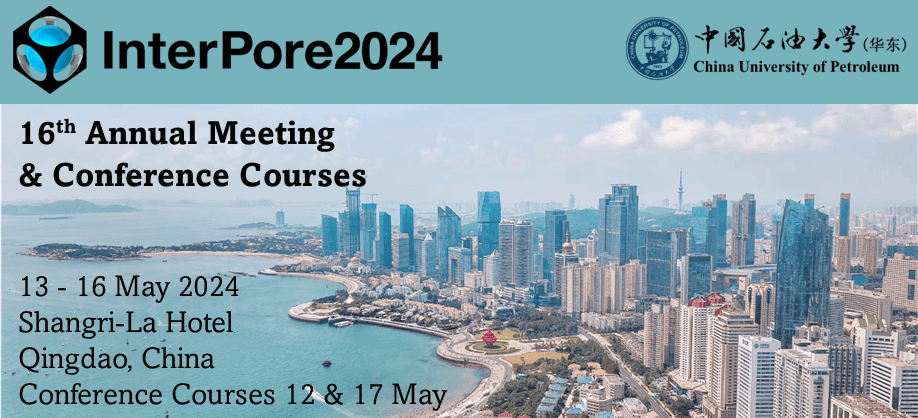Speaker
Description
Understanding the pore-scale displacement and trapping mechanisms for hydrogen-brine systems in porous rocks is pivotal as efforts increase to develop subsurface hydrogen storage facilities. Pore-scale flow visualization experiments serve as an important tool to comprehend the pore-scale mechanisms during hydrogen (H2) injection and withdrawal. However, conducting such experiments, particularly under subsurface conditions, are intricate and resource intensive. Quasi-static pore-network models (PNMs) offer a faster alternative to understand multiphase flow in porous media. These simplified models represent pore spaces as networks comprising pores and throats with idealized geometries, simulating fluid invasion based on the quasi-static 'invasion' capillary pressure required for fluid entry. PNMs have been extensively used to simulate multiphase fluid flow behaviour for oil-water systems in porous media, however their utilization for H2-water systems remains limited. In this work, we use a widely used PNM [1] to simulate H2-water flow on two distinct networks, one from a homogeneous rock sample and another from a heterogeneous layered rock sample. We then compare these simulated results with recently conducted pore-scale 3D visualization experiments on both rocks [2], [3]. Comparative analysis indicates a good agreement between PNM simulations and experimental results for drainage and imbibition in the homogeneous case, and reasonable agreement in the heterogeneous case during drainage. However, it is apparent that while PNMs offer a simplified and computationally efficient means to simulate hydrogen flow and displacement in porous media, they cannot presently supplant experimental observations, particularly for complex rocks. This study emphasizes the necessity for further validation of these models against experimental findings to expand their usage and refine simulation predictions.
| References | [1] A. Q. Raeini, B. Bijeljic, and M. J. Blunt, ‘Generalized network modeling: Network extraction as a coarse-scale discretization of the void space of porous media’, Phys Rev E, vol. 96, no. 1, Jul. 2017, doi: 10.1103/PhysRevE.96.013312. [2] Z. Jangda et al., ‘Pore-scale visualization of hydrogen storage in a sandstone at subsurface pressure and temperature conditions: Trapping, dissolution and wettability’, J Colloid Interface Sci, vol. 629, pp. 316–325, Jan. 2023, doi: 10.1016/j.jcis.2022.09.082. [3] Z. Jangda et al., ‘Subsurface hydrogen storage controlled by small-scale rock heterogeneities’. ArXiv preprint, 2023, doi: 10.48550/arXiv.2310.05302. |
|---|---|
| Country | United Kingdom |
| Conference Proceedings | I am interested in having my paper published in the proceedings. |
| Student Awards | I would like to submit this presentation into the InterPore Journal Student Paper Award. |
| Acceptance of the Terms & Conditions | Click here to agree |




.jpg)
